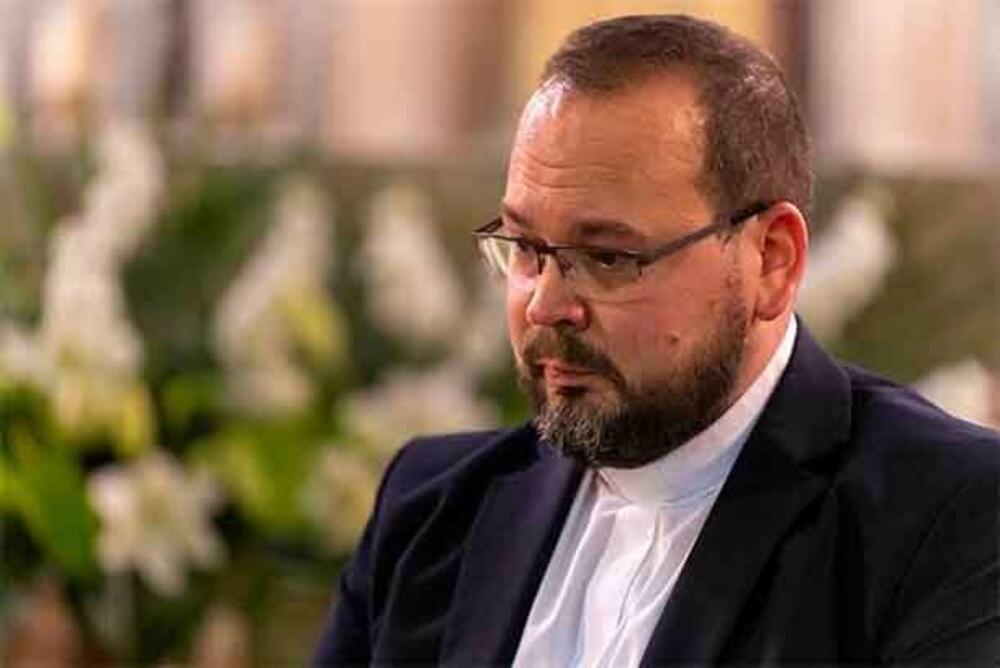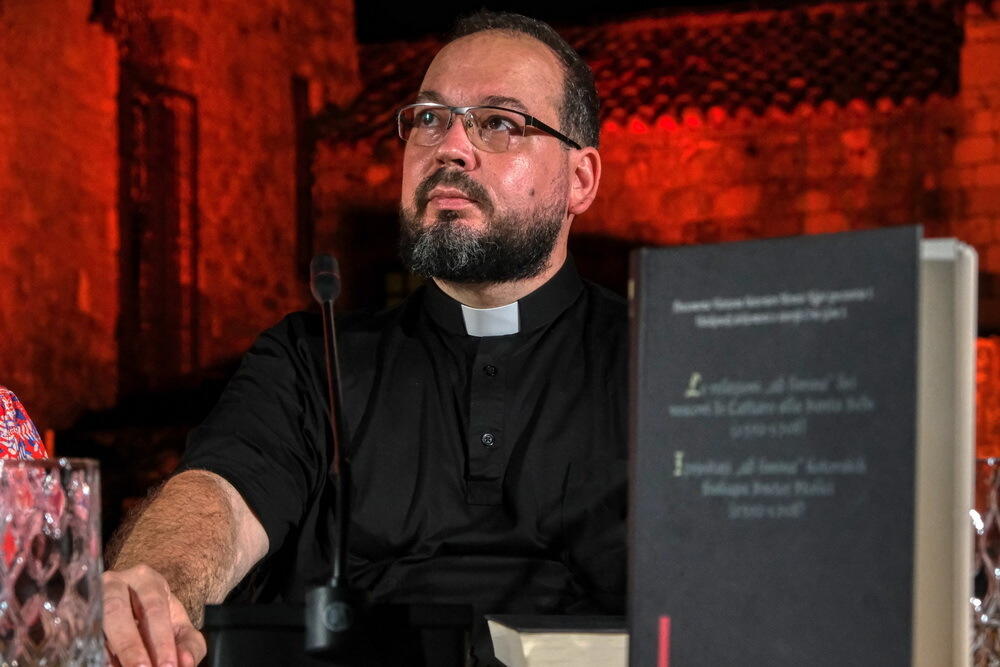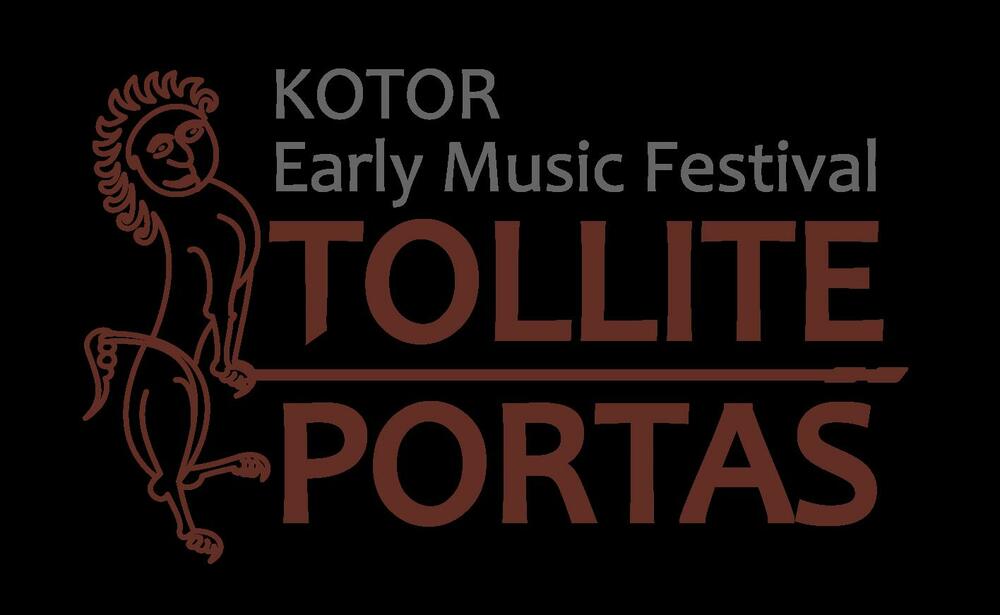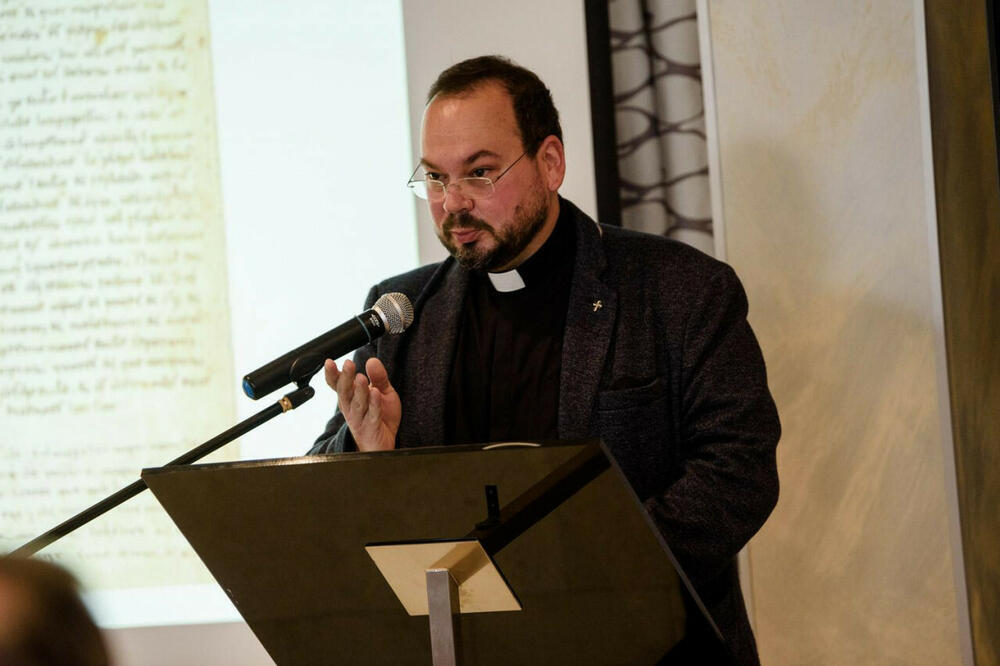This year in October, the Diocese of Kotor, with the support of partner institutions, is launching a new music festival "Tollite portas".
Considering the lack of events dedicated to early, medieval and renaissance music in Montenegro, the Festival was founded with the aim of bringing early music closer to Montenegrin and foreign audiences, and to inspire and attract a new, younger generation of classical music lovers. Also, the Festival promotes the rich historical musical heritage of this region and presents our cultural heritage to foreign artists. This invites the discovery of new works and stimulates the curiosity of both performers and listeners, which will be contributed to by the participation of recognized artists and ensembles, such as "Lazarus Project" and "Labyrinthus".
The announcement for the upcoming festival and adequate sound illustration will be the concert "Venice in Kotor", which will be held on April 30 in the Cathedral of St. Tripuna in cooperation with the KotorArt festival. At the concert, international artists Iana Djakova, mezzo-soprano, Marina Bjelova, theorbo and Ivan Velikanov, cornet and organ, will perform the works of Venetian composers such as Legrencio, Gabrieli, Monteverdi, Cachini, in order to introduce the audience to the music of Renaissance and Baroque composers. Musicians play historic instruments that help performers and audiences experience the music in a similar way to how the composer intended it and to get a clearer picture of the music of the distant past.
What inspired you to establish the festival "Tollite portas", a festival that will unite the rich Kotor tradition, culture, history and music?
In the Kotor Cathedral, the Cathedral of St. Tripuna, concerts of spiritual and classical music are regularly held. Thus, in the last couple of years, we have had several very high-quality concerts of early music performed by renowned ensembles such as "Project Lazarus" and "Labyrinthus". Behind their historically and scientifically informed performance, there is research and musicological work. Seeing that the response of the audience, in which the vast majority encountered this kind of musical expression for the first time, and for our area these were all premieres, and in some cases there were also premieres at the European level, was extremely positive, I concluded that the festival dedicated to early, medieval, vocal and instrumental music, was a significant enrichment of the cultural life of the city and its visitors. That's why I suggested to Danilo Rybchikov, the leader of the Labyrinthus ensemble, cooperation in the form of organizing a festival.

How did you come up with this name of the festival? Who should "open the door"?
The name is very symbolic. "Tollite portas" is an antiphon of a psalm that was sung in the Middle Ages during the consecration of a church. The psalms themselves, as a literary genre in the Bible, are actually songs that were sung accompanied by a musical instrument called a psaltery, and in Christianity, like music in general, they are an indispensable part of the liturgy. However, "Tollite portas", it is very important to point out, is also one of the oldest musically notated compositions in the territory of today's Montenegro. The oldest musical sources are found in the Kotor Lectionary and Pontifical, which was used during the dedication of the Cathedral in 1166. That liturgical book, apart from being a unique memorial of literacy and culture, also contains important historical documents. As for the second part of your question, I would say the following: It is the cathedral that opens the door for us and allows us to transfer our spirit and thoughts to another time, disconnect for a moment from everyday life and fill our mind and soul with an extraordinary experience.
What made you decide to start a festival about early music?
First of all, because there is nothing similar in Montenegro. I remember that many years ago, the distinguished Montenegrin musician Egon Mihajlović held a festival of early music in Perast, and I remember that it was extremely well received. After that, there was a big gap. Montenegro is a small country, and in our area there are really rare opportunities to encounter music, which is actually the root and foundation of all later European musical creativity. It is too easy to forget that Kotor and the Dalmatian coast, because we have to think outside of today's geographical and political frameworks, share an entire cultural past that today is not sufficiently known, nor is it understood in the correct way.
Can you tell us a little more about the first edition of the festival?
The first edition of the festival will take place in the first half of October this year. This is the time when the tourist bustle and crowds decrease, when the cultural offer, which is oversaturated during the summer, I dare say, is significantly weaker. The festival is aimed at all art lovers, and by choosing this date, I believe that we will respond to the needs of the local population as well as foreign visitors. As for the concept, this year, and I hope the next, the emphasis of one of the concerts is always on the performance of works related to our area. If the repertoire will be more diverse, we ask the performers to include some compositions from local sources. With that, they themselves include in their programs works that will popularize our heritage elsewhere. The first concert, at which the ensemble "Labyrinthus" will perform, will be dedicated exclusively to the music of the Cathedral of St. Tripuna written in the aforementioned Pontifical. Other concerts will provide a tapestry woven from the threads of different eras, provenances, influences, which were intertwined in the rich past of Kotor and Boka. This does not mean that all this music was created in Kotor or was necessarily performed there, but it certainly belongs to it, because Kotor in the past also belonged to much wider cultural horizons than today. Let's just remember that in addition to the oldest sheet music and the oldest mention of singing in literature, Kotor also has the oldest mention of an organ in today's Montenegro. Having an organ in the 15th century is a sign of great cultural reach. Other concerts will show us that typical Mediterranean and Adriatic intertwining of cultural ties. We will listen to music from Southern Italy, from Norman-Sicilian sources, to which we belonged in the metropolitan sense, then Byzantine medieval music, which will be performed by the "Chronos" ensemble. The liturgical drama or the medieval story of Judith will be performed by "Diaologos" and Katarina Livljanić, and there will be an opportunity to enjoy music on the lute, when we will hear Paul Kieffer. We are also expecting a valuable performance by "Project Lazarus", which will present music from Dalmatia and Istria.

Unlike classical or baroque music, the musical sources of medieval and renaissance music are very rare, and even rarer for instrumental music compared to vocal music. The musical treasures of the Middle Ages and the Renaissance are priceless, but also largely unknown. What else, apart from the aforementioned Lectionary and Pontifical source, is hidden in the archives of the Diocese of Kotor? What else is waiting to be explored?
There is little in the archive regarding the early music itself. The great fires and earthquakes in which the archive and the most important libraries perished, unfortunately, took too great a toll. There are fragments of musical manuscripts, and of the complete codices there are the Pontifical, as well as the Kotor Missal of St. Jakov of Lodja, both are Beneventan manuscripts that are kept outside Montenegro. The Franciscan library contains numerous, very early printed, liturgical books with neat neumatic notation, as opposed to the adiastematic one in the Benevetan manuscripts. However, even these mentioned ones are not well known from a musical point of view, nor more widely, except of course to experts. In neighboring Dubrovnik, the sources are much more extensive, and we definitely plan to take them into account in the future, because the artistic and commercial connections between these two cities are well attested in the sources. There is certainly also the Bar Office, which we plan to include in the program. In the later period, especially the 19th century, I would say that the sources are much richer, but they are not the focus of our Festival.
This type of music is rarely present on concert podiums, it is completely unknown to many. How to make this repertoire accessible to the audience of the 21st century? In your opinion, is it important to interest young performers in expanding their repertoire to include early music?
I think that in this case it is important to interest both the younger and the older, both the performers and the audience. One of the best ways is to allow them to experience such music live in an authentic performance and environment.
Early music festivals are often organized in an authentic setting, reconstructed houses, sacred buildings or castles created several centuries ago? Have you thought about the environment in which the first festival will take place?
Yes, the protagonist of our Festival is, of course, the performers, the Cathedral itself. In addition to being a place of worship, it was for centuries the foundation of the city's spiritual, cultural, social, and economic identity. Musical and artistic works were created for it, music was regularly performed there, and this will be an opportunity to experience it with its magnificent Romanesque architecture in a different way. With this type of music, especially sacred music, it doesn't matter where it is performed. The acoustics and artistic whole of sacred buildings cannot be compared with more technically equipped modern concert halls. However, one of Mozart's Requiem or one of the numerous masses, Vivaldi's Stabat Mater, Pallestrina, Tallis or Monteverdi, and especially the Gregorian chorale, never resonate as well in the music hall as in the sacred space for which they were created. I think many performers agree with that.

Festivals of early music are of great importance for every country, because they encourage research, performance and preservation of compositions of domestic production, which is why they often have the support of the highest state bodies and institutions. What is the situation with the "Tollite portas" festival, have you encountered support at the local and national level? I assume that you will agree with the statement that this is one of the ways for Kotor and Montenegro to keep up with Europe, to show their belonging to Europe and common roots.
When I first published the works of Fr. Konrad Ebert, very demanding and surprisingly beautiful musical compositions, written for the Muo suburban fishing village near Kotor, I knew that they had to be performed in order to reach the consciousness of the descendants of those fishermen for whom they were written. The fact that a fishing village had its own composer, teacher of singing and playing, and its own cycle of works for three-part and four-part male choir, from which later one of the most successful singing societies in Boka, the Croatian Singing Society "Zvonimir", was born, I considered that it must be something that will be recognized at the highest level. I have to admit that I didn't find too much interest or the support I expected for such an undertaking. Nevertheless, somehow, with the wholehearted help of the Municipality of Kotor and the Government of the Republic of Croatia, I managed to achieve that the works were still professionally performed and thus presented.
I don't know what the situation will be with "Tollite portas". For now, I can say that we have found great support in the Municipality of Kotor and the Secretariat for Culture, Sports and Social Activities. One of our partners will be the Croatian National Council of Montenegro, who also issued phototypes and thus made available the Kotor Benevento manuscripts, which are normally kept in Berlin and St. Petersburg. I was pleasantly surprised by the support shown by KotorArt, the most important festival in this area, as a partner of the first, announcement concert that will soon be held in Kotor. I expect some other partnerships, and I hope that other institutions will recognize the importance of this kind of festival.
What do you expect from the festival? What are the plans for future releases? In what direction will the festival develop?
For now, I expect it to take root, develop and become sustainable and recognizable. Already this year, the Festival will be presented at the MedRen international conference, which is an extremely great honor, for which I am grateful to Mr. Ryabchikov. In this way, the interest of other, respected international researchers and contractors could be aroused. In addition to the musical performance, we plan to enrich the experience in the future with the projection of the musical codes themselves, but more on that one by one. Entrance to all concerts is free, that's why we depend heavily on the financial support of patrons and sponsors. For now, I would like to thank all sponsors and partners, you for the dedicated space, and invite everyone interested to the first early music festival in Kotor.
Bonus video:




